Home » Publications » Food Safety Magazine
Our Publications
Please select a publication below.
Food Safety Magazine
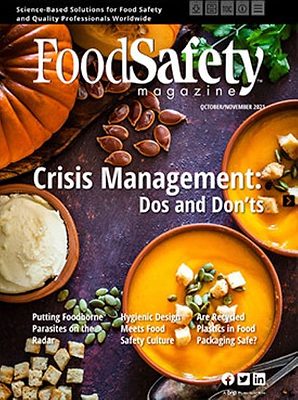
October/November 2021
Features
Back to TopExperienced food safety professionals are a valuable asset in today’s pandemic challenges
Read More
Foodborne Parasites: An Insidious Threat to Food Safety and Public Health
Often neglected in risk assessments, foodborne parasites deserve more scrutiny—and prevention
October 18, 2021
The Regulatory Inspection: A Tremendous Opportunity to Build a Relationship
Tips on keeping the peace yet making your point
October 18, 2021
Columns
Back to TopDeveloping a Culture of Hygienic Design under the Smarter Food Safety Umbrella
The learnings of a storied career in food plant sanitation
October 18, 2021
Improving the Safety of Meal Kits: A Holistic Approach
Popularity of meal kits necessitates heightened food safety vigilance
October 18, 2021
The Regulation of Chemical Recyclates for Use in Food Packaging
While the need for recycling is important, it shouldn’t compromise food safety
October 18, 2021
Training the Next Generation of Meat Scientists
A look at the Meat Science & Animal Biologics Discovery food safety program at the University of Wisconsin
October 18, 2021
Food Safety Insights: 5 Years Later, Part 2
Celebrating the Food Safety Insights partnership with Food Safety Magazine
October 18, 2021
Faster, Cheaper Sequencing Transforms Microbial Food Safety Testing
Transformational insights in microbial surveillance technology
October 18, 2021
Lessons Learned from 1937
Some lessons are just as relevant today as on the day the events occurred
October 18, 2021
Never miss the latest news and trends driving the food safety industry
eNewsletter | Website | eMagazine
JOIN TODAY!Copyright ©2024. All Rights Reserved BNP Media.
Design, CMS, Hosting & Web Development :: ePublishing

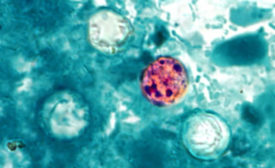

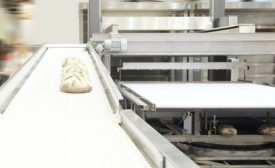


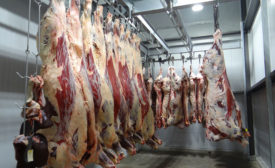
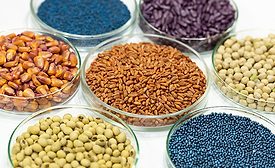

.png?1634598143)
